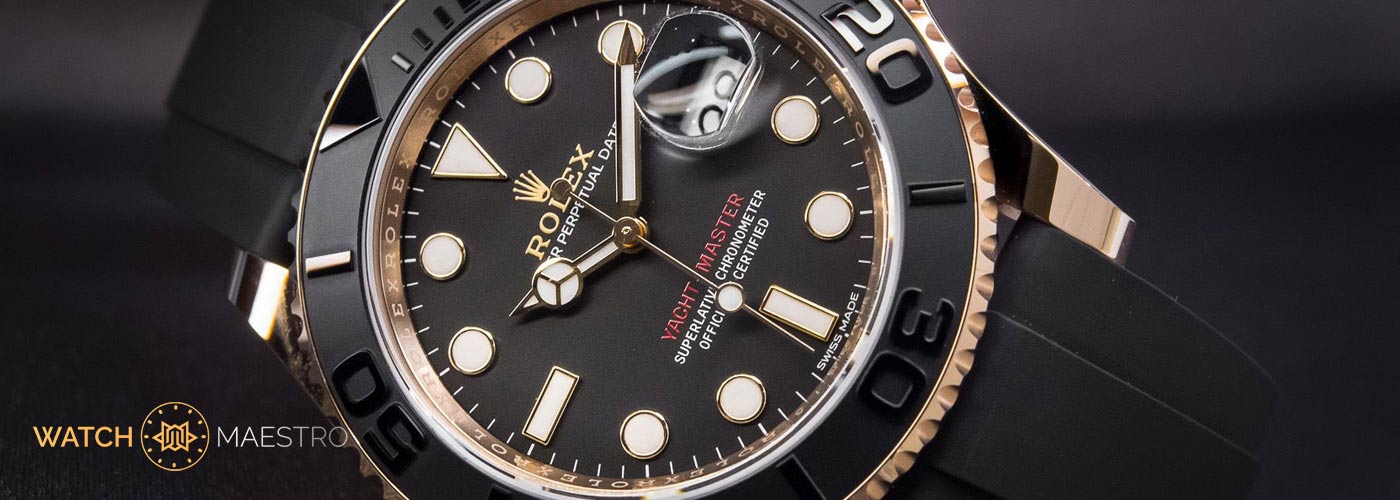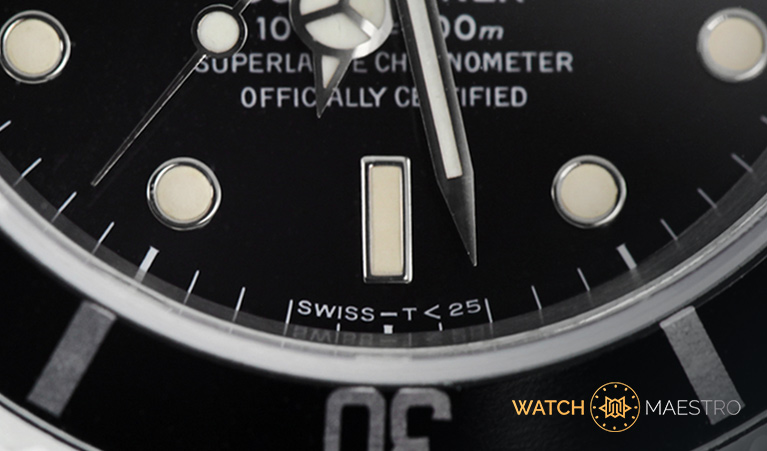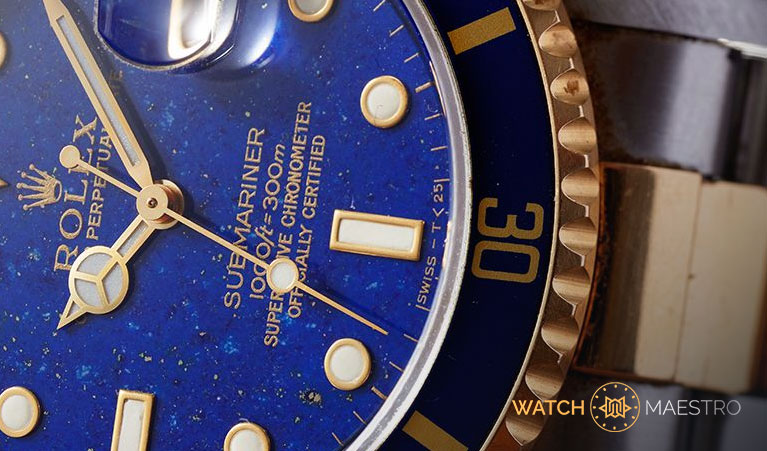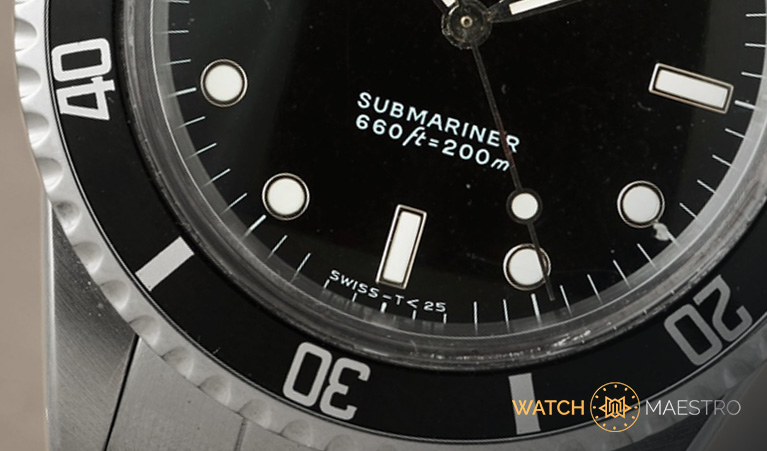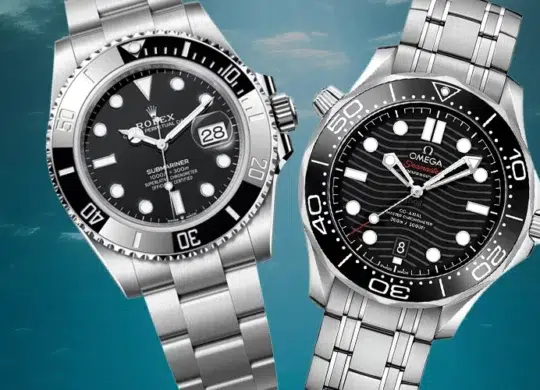Difference Between Swiss T 25 & T Swiss T
Before we dive into the details of why premium watchmakers put this label on the dial, let’s first discover what they truly mean.
- T in the watch dial refers to the tritium-activated deposits in the watch.
- Swiss-T <25 refers to a Swiss watch and has a tritium amount of less than 25mCi.
- T Swiss T refers to a Swiss watch that emits tritium less than 7.5mCi.
Radioluminescence in Luxury Watches
Have you ever paid attention to how you’re able to check the time even in the dark? Watchmaking is not as simple as just coming up with a design and launching a wristwatch; it takes years of hard work to come up with the right materials, design, expertise, and much more to manufacture a watch.
When it comes to premium watchmaking, every little detail matters. This is why luxury brands use luminescent materials in watches to make them legible in dark environments. Watchmakers used to coat the hands and indices with radioluminescent and photoluminescent materials in the 1900s.
But little did they know that the radioactive material they were using was quite harmful to the wearers. Too much exposure to these materials can be harmful and life-threatening, which later on led to the research of safe radioactive materials.
Safe Alternatives for Radium in Premium Watches
As mentioned above, the first-ever material used in watches to make the dial and hands glow was radium. It was soon discovered that Radium is a highly toxic material and can cause serious health problems. This came to attention when a few girls working in the factory to paint watch dials died due to accidentally consuming radium from the brushes they were using.
Later on, the use of radium was changed with tritium, a less toxic luminescent material. This material only emits low-energy beta radiation, which cannot enter the skin. Furthermore, it has a short half-life of about 12 years, making it an ideal choice for watchmaking. Despite all its benefits, the material is toxic and can lead to serious health problems if digested through the mouth or inhaled in large quantities.
Today, watchmakers use a safe alternative to radium, called SuperLuminova. It offers perfect legibility without risking the lives of makers and wearers. Apart from that, watchmakers use Chromalight and LumiBrite to make the watch dial and hands glow in the dark. All these materials are non-radioactive and are easily charged by an external light source. Different watch brands, including Omega, Breitling, etc. use SuperLuminova in their watches, while, others use Chromalight for the glow.
Watch Brands Using LUME Technology
LUME Technology has taken over the watchmaking industry. This advancement has proved to be even more helpful in manufacturing diver’s watches as they completely relied on good readability in low light. The light cannot penetrate to the depths of the ocean, thus, diver’s watches must be designed with high-end materials to ensure legibility underwater.
Luminescence is extremely important on a diver’s watch to avoid decompression sickness and other related issues underwater. Divers can easily keep track of their time deep under the water and avoid any health hazards.
Seiko was one of the first brands who invested their time and energy in developing the LUME technology. They made the first Japanese diver’s watch in 1965 using the same technology, called the Seiko 62MAS. The luminescence was used on hour markers and hands to glow in low-light conditions underwater. This watch brand has used this technology in multiple other watches they manufactured later on.
Today, most brands are using this technology in diver’s watches to ensure they are safe and secure underwater. You can keep track of time to end your water adventures before they become a hazard to your health and life.
Final Words on Wristwatch Luminescence
The watch technology keeps on improving with time. Today, the wearer’s health is of significant importance rather than simply manufacturing a wristwatch from scratch. This is the reason why top brands like Rolex and Patek Philippe are always on the lookout to find the perfect materials to reduce any risk for the wearer and ensure a great experience for them.
This is where LUME technology and non-radioactive materials in wristwatches come into the picture. The use of these materials is really commendable in diver’s watches who put their life at risk when they go into the deep water. These watches with luminescence technology enable divers to look at time underwater and come out when it’s safe for them.

